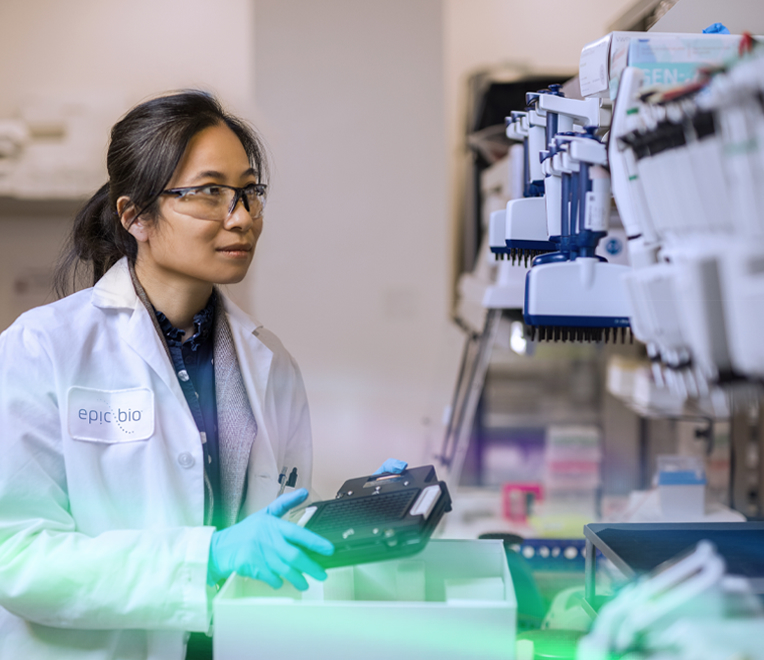At Epicrispr, we are building the world’s most expansive therapeutic pipeline based on the science of epigenetic engineering.

Our pipeline
We aim to develop products that change the expression of certain genes inside cells to ameliorate specific defects. Our therapeutic candidates are utilizing a wide spectrum of mechanisms of action (see below), with clinically validated in vivo and ex vivo delivery approaches, and a mutation-agnostic technology.
As we strive to develop this new class of treatments, we are committed to working closely with regulatory agencies, patient advocacy groups and healthcare professionals to bring our products to patients.
What is it?
Facioscapulohumeral muscular dystrophy (FSHD) is a genetic muscle disorder mostly affecting the face, scapula, and the humerus region. The loss of movement is accompanied with chronic pain, anxiety, and depression. Symptoms usually start before age 20 and may lead to being wheelchair-bound by age 50. It is estimated to be the second most common muscular dystrophy.
What causes it?
FSHD is caused by a loss of methylation of the D4Z4 region, leading to an abnormal expression of the DUX4 gene on chromosome 4, normally only expressed during embryogenesis. Abnormal expression of DUX4 in the muscles is toxic, eventually leading to muscle cell death and tissue degeneration.
How do we treat it?
There is currently no cure for FSHD. The standard of care requires a team of specialists who can only manage symptoms, highlighting the unmet need for a transformative therapy. Therefore, Epicrispr can target re-methylating the D4Z4 region and suppressing DUX4 expression to prevent further muscle cell death.
Clinical Trial
For more information, please visit:
What is it?
Duchenne muscular dystrophy (DMD) is a rare and severe X-linked genetic muscle disorder. DMD is characterized by progressive muscle weakness and degeneration that begins in early childhood (typically appears between ages 2 and 5) and leading to delayed motor milestones and eventually loss of ambulation by the early teenage years. It primarily affects boys, with an incidence of ~1 in 3,500 to 5,000 live male births. Disease progression compromises respiratory and cardiac function leading to respiratory distress and dilated cardiomyopathy, which can lead to life-threatening complications in the late teens to early 30s. Without intervention, the average life expectancy is approximately 20–30 years.
What causes it?
DMD is caused by mutations in the DMD gene located on the X chromosome, which encodes dystrophin, a large, rod-shaped cytoskeletal protein essential for maintaining the structural integrity of muscle cell membrane (sarcolemma) during contraction. Dystrophin links the muscle fiber internal cytoskeleton to the extracellular matrix. A variety of different mutations in the gene results in loss of dystrophin protein. In the absence of functional dystrophin, the muscle cells undergo damage, leading to chronic inflammation and necrosis in the muscle tissue, and eventual replacement of muscle tissue with fat and fibrotic tissue. This progressive muscle degeneration over time severely impairs mobility, respiratory, and cardiac function.
How do we treat it?
Most current therapies focus on replacing dystrophin, but because the gene is exceptionally large, they rely on delivering shortened versions called micro-dystrophin, which are helpful but inherently limited in restoring full protein function. We will use Epicrispr’s proprietary GEMS platform to induce specific and robust up-regulation of utrophin (UTRN) as a potential therapy to treat DMD. UTRN is structurally and functionally similar to dystrophin and a naturally occurring cytoskeletal protein. Utrophin is typically expressed during fetal development but after birth, it is downregulated and is functionally replaced by dystrophin. Epicrispr’s GEMS platform is uniquely positioned to selectively activate the UTRN gene, aiming to restore muscle stability and prevent further damage. This UTRN-focused strategy has the potential to benefit a broader population of DMD patients, as it will be an effective treatment in all patients, regardless of their Dystrophin mutation. Furthermore, since UTRN is a naturally occurring protein expressed during fetal development, its activation is not expected to trigger an immune response once activated, making it an attractive target for Epicrispr to address the unmet need in DMD patients.
What is it?
RP is a group of genetic disorders characterized by degeneration of the retinal cells, which causes progressive loss of vision. There are many genes involved in RP, with autosomal dominant, recessive, X-linked, and maternal inheritance patterns. Patients typically have trouble seeing at night and experience tunnel vision. RP is the leading cause of inherited blindness. Autosomal dominant RP4 (AdRP4) represents about 30% of all autosomal dominant RP cases.
What causes it?
AdRP4 is a hereditary autosomal dominant degenerative disorder caused by mutations in the RHO (Rhodopsin) gene, encoding a light-sensitive receptor protein involved in visual phototransduction. Accumulation of misfolded RHO in the endoplasmic reticulum ultimately leads to photoreceptor degeneration. There are more than 140 mutations that have been identified with AdRP4.
How do we treat it?
There is no cure for any form of RP and the condition is usually managed by low vision aids. Developing gene therapy treatment for AdRP4 has been challenging because of its dominant negative nature and because there are more than 140 mutations associated with this condition. Studies indicate that augmentation or suppression strategies alone are insufficient.
Epicrispr is developing a unique treatment designed to work on all 140 RHO mutations and free of any DNA alteration. This “suppress and replace” therapeutic approach is based on a single AAV vector that can simultaneously inhibit endogenous mutated RHO expression (suppress) and produce normal RHO (replace).
Other
Key
Suppress: Suppress the endogenous gene either by downregulation or by permanently turning off the expression of a gene
Activate: Upregulate the expression of a gene either to physiological levels (i.e., to restore haploinsufficient gene activity) or above physiological levels
Suppress and replace: Suppress the endogenous mutated gene and replace it with exogenous wildtype version of gene
Multiplex activation: Activate several genes to add specific feature to cells (i.e., neuroprotection capabilities)
Multiplex suppression: Suppress several genes at a time to remove specific features to cells
Multidirectional modulation: Simultaneously suppress and activate different genes
Undisclosed